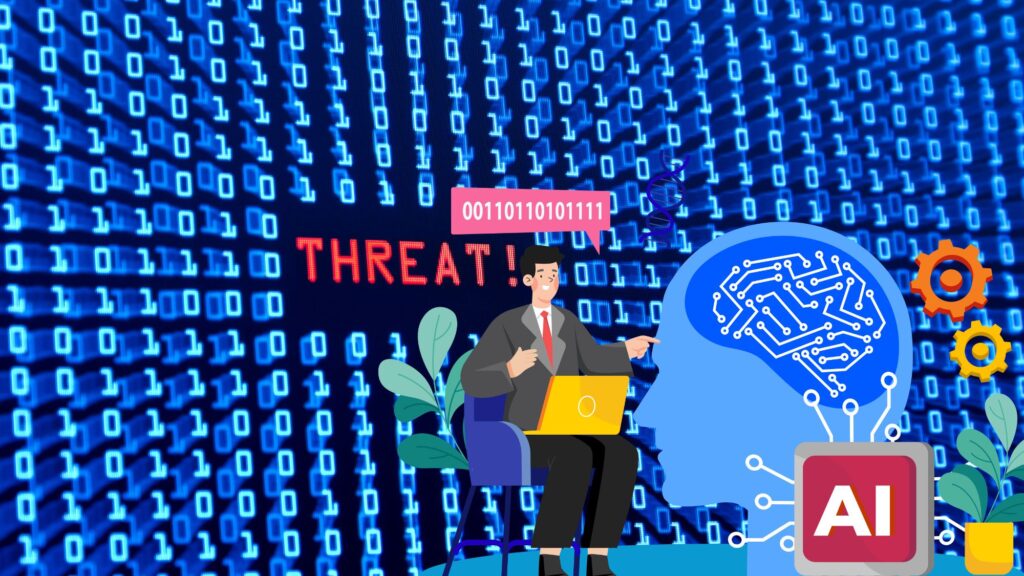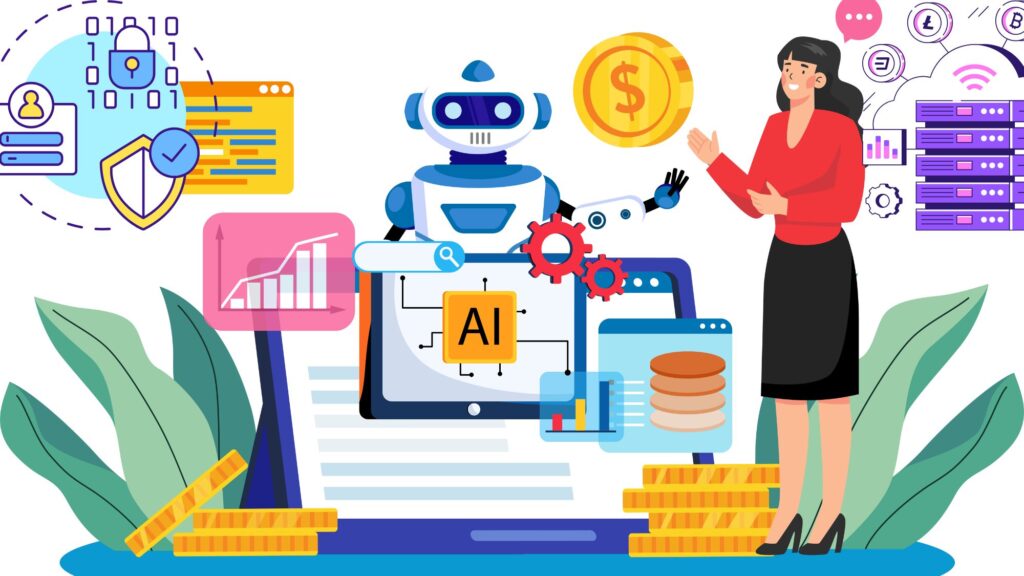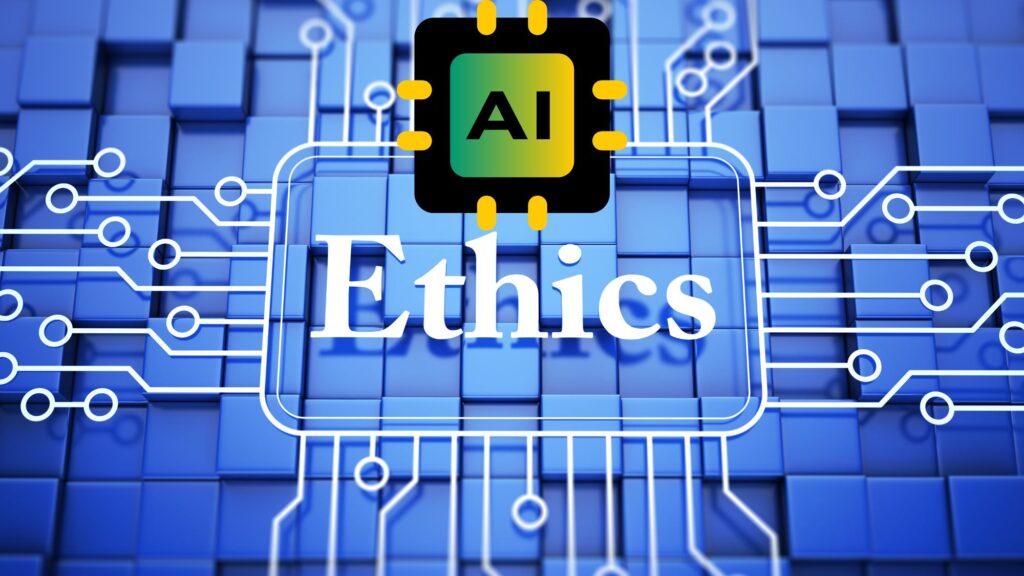AI-POWERED CYBER THREATS: HOW HACKERS ARE USING ARTIFICIAL INTELLIGENCE AGAINST US
AI is no longer just a tool for innovation; it’s also become a weapon in the hands of cybercriminals.
Hackers are now relying on artificial intelligence to craft smarter, more adaptive attacks that bypass traditional defenses.
From creating convincing phishing schemes to avoiding detection, AI is helping bad actors step up their game in ways we couldn’t have imagined a few years ago.
This shift is making it harder for individuals and businesses alike to stay ahead in the fight against cyber threats.
Understanding how hackers use AI gives us a better chance to protect ourselves. If you’re curious about the tools and tactics at play, or what can be done to stay safe, you’re in the right place.
Plus, you can explore topics like these further with resources such as AI Powered Threat Detection Solutions and Cyber Threat Intelligence for actionable insights.
The Landscape of AI in Cybersecurity
Artificial intelligence is transforming cybersecurity in ways both exciting and terrifying. On one hand, AI gives hackers new tools to launch sophisticated attacks.
On the other, it empowers defenders with smart systems capable of identifying and stopping threats faster than ever.
But here’s the kicker: the same technology that builds shields can also be turned into weapons.
Let’s break down exactly how this dual nature of AI is shaping cybersecurity today.

How Cybercriminals are Weaponizing AI
Hackers have a long history of using the latest technology to their advantage, and AI is no exception.
With AI, cybercriminals can craft attacks that are more convincing, adaptive, and difficult to detect.
Why settle for phishing emails that look clunky and fake when deep learning models can churn out messages that mimic your boss or bank perfectly?
AI is allowing hackers to:
- Automate phishing attacks: AI tools can create tailored emails faster than ever. They analyze public information, like LinkedIn profiles, to craft messages that hit a psychological nerve or appear shockingly trustworthy. Tech-savvy criminals are even automating responses, making the attack feel authentic if you reply.
- Generate deepfake content: Videos or audio that are nearly indistinguishable from the real thing. Imagine receiving a voicemail from your “CEO” asking for immediate action. It can be fake, but AI makes it almost impossible to tell without advanced analysis.
- Develop smarter malware: AI makes malicious software evolve on its own. This means it can evade detection by altering its behavior or appearance based on the defenses it encounters.
One sobering example of this is AI-assisted spear-phishing, where the attackers use machine learning to adapt emails or messages in real time, fooling even experienced users.
Learn more about essential tools to build cyber resilience and protect your organization against increasingly intelligent attacks.
Defensive AI: Fighting Fire with Fire
Thankfully, cybersecurity experts are not just sitting around. They’re harnessing AI to create smarter defenses that can adapt in real-time, much like the attacks they’re designed to stop.
With billions of digital interactions happening every day, AI can monitor, analyze, and respond far quicker than humans ever could.
Defensive AI helps in:
- Anomaly detection: AI systems learn what “normal” behavior looks like for your network. When something unusual pops up, like a user accessing sensitive files at odd times, it triggers an alert.
- Intrusion prevention: By scanning data streams non-stop, these systems can identify malicious patterns before an attack takes effect. Think of it as having a digital bodyguard watching your every move.
- Real-time threat response: AI closes the gap between detection and resolution. Once it spots a threat, it can take immediate action, such as isolating a compromised system to prevent further damage.
For example, advanced AI in cybersecurity platforms can recognize zero-day vulnerabilities, threats that exploit unknown flaws, and take action before human engineers even become aware of the issue.
That being said, the race between attackers and defenders isn’t slowing down. Criminals are aggressively working to outpace defensive measures, and it’s a constant struggle to stay ahead.
Yet by taking advantage of AI-driven approaches, businesses and organizations have a fighting chance to tip the scales in their favor.
Common AI-Powered Threat Tactics
Artificial intelligence, while a tool of immense potential for good, has unfortunately fallen into the hands of cybercriminals who are exploiting its capabilities in frighteningly innovative ways.
Let’s examine the common tactics that make AI-driven cyber attacks so dangerous.
AI in Phishing and Social Engineering
Imagine this, you’re scrolling through your email, and suddenly you spot a message that looks like it’s from your company’s HR department.
The logo is perfect, the language sounds familiar, and they’re asking you to confirm some “urgent” details. Chances are, you’d click. This is exactly how AI takes phishing attacks to the next level.
With the power of AI, hackers can:
- Scrape massive amounts of personal data from social media and public records, like LinkedIn profiles or previous email interactions.
- Craft highly personalized emails or messages that feel tailored to you, your role, habits, and even writing style.
These attacks are no longer generic or clunky, they’re polished and gripping, almost indistinguishable from real communications.
The use of machine learning enables continuous improvement, meaning the attacks you saw six months ago are probably outdated now.
Case in point: AI can automate entire phishing campaigns, analyzing responses in real-time to tweak communication strategies.
This transformation has made spotting phishing emails harder than ever.
If you’re looking to beef up your defenses, check out how to build an effective cyber resilience strategy tailored to evolving cyber threats.

Deepfakes and Their Role in Fraud
Deepfake technology is no longer the stuff of science fiction. Today, hackers can create fake videos or audio so convincing, they’re often indistinguishable from the real thing.
Have you ever received a voicemail from your “CEO” urgently requesting a wire transfer? That could very well be AI at work.
Here’s how it works:
- Cybercriminals use machine learning to mimic the voice or appearance of someone you trust. Be it a company executive, a family member, or even public figures.
- Videos of executives calling for investors or manipulating stock prices have already emerged, showcasing the extent of this tool’s danger.
One real-world example is audio-based deepfake fraud, where hackers use manipulated voice recordings to authorize banking transactions.
These are often paired with urgent email instructions, blending traditional phishing with AI-generated content for maximum effectiveness.
For insight to understanding hacker motivations, visit this article about the mind of a hacker.
AI-Driven Malware
Malware has always been malicious, but with AI, it’s now smarter. Traditional malware attacks usually follow a fixed script, relying on vulnerabilities they already know.
But AI-powered malware flips the script and learns on the job.
AI in malware operates by:
- Adapting in real-time: It modifies its behavior based on the defense mechanisms it encounters. For instance, if a certain exploit fails, it tries another without requiring human intervention.
- Evading AI defenses: Yes, even AI-trained security systems can be fooled. AI-driven malware analyzes patterns in detection systems and evolves to avoid triggering alerts.
- Targeting specific users: Rather than performing broad attacks, this new breed tailors its approach for higher-value targets—the proverbial “CEO computer” rather than an intern’s machine.
Take the case of polymorphic malware: it changes its appearance each time it’s scanned, making signature-based detection methods virtually useless.
What’s even scarier? It can launch attacks only when specific conditions are met, increasing its success rate and reducing the chance of detection.
For SMEs worried about evolving malware threats, understanding business continuity strategies can help safeguard operations.
AI-powered threats are here, and their sophistication will only grow.
Identifying these tactics is the first step to creating solutions capable of countering them, preparing businesses and individuals to face an increasingly automated cyber threat environment.
Mitigating the Risks of AI-Powered Threats
As hackers use artificial intelligence to magnify their malicious activities, businesses must find ways to fight back.
The same intelligence that makes attackers more dangerous can also protect us when applied strategically.
Let’s focus on how companies can reduce risks and build robust defenses.
AI for Cyber Defense
One of the most effective ways to counter AI-powered threats is by using AI defensively. Implementing AI as part of your cybersecurity strategy, enables your organization actively monitor networks, detect irregularities, and respond to threats in real-time.
AI doesn’t just watch, it learns. The more it operates in your environment, the better it gets at spotting intrusions.
For example, AI-powered tools can:
- Analyze Patterns: AI systems identify and flag abnormal behaviors, such as unauthorized access attempts during odd hours or unusual file downloads.
- Automate Responses: Once an anomaly is detected, AI can isolate the affected system, preventing the spread of malware.
- Predict Threats: Machine learning models, trained to recognize potential risks, can stop attacks before they happen.
Organizations should explore AI in cybersecurity to see how it’s transforming cyber defenses.
Integrating these tools helps businesses gain a swift automated shield against evolving threats.

Educating Teams and Building Awareness
AI may be powerful, but even the best tools can’t compensate for human error.
Cybercriminals often rely on phishing schemes, taking advantage of uninformed employees. One misstep, like clicking a malicious link, can open the door to disaster.
To counter this, invest in ongoing cybersecurity training for your team:
- Teach employees how to recognize threats such as phishing emails or fake log-in pages.
- Use practical simulations to test their awareness and improve their real-world response.
- Make cybersecurity an ingrained part of the company culture.
A well-trained team acts as the first line of defense. Learn more about how to create engaging and effective cybersecurity training programs.
These efforts ensure that your employees aren’t a weak link but rather a strong asset in your cybersecurity strategy.
The Role of Multi-Factor Authentication
Passwords alone are no longer enough to secure sensitive information. Hackers can easily use AI to break simple credentials.
Multi-factor authentication (MFA) offers a practical solution, requiring multiple verification steps before granting access.
AI enhances MFA by:
- Monitoring login attempts for suspicious activity, such as logins from unknown locations.
- Using facial recognition or voice analysis for added security layers.
- Rapidly adapting to emerging threat behaviors to maintain robust authentication defenses.
Adopting MFA can drastically reduce the likelihood of unauthorized access, even if one layer of protection fails.
Utilizing AI, educating teams, and implementing strong multifactor authentication systems, enables companies mitigate the growing risks posed by AI-driven cyber threats.
Ethical Concerns and the Future of AI in Cybersecurity
As artificial intelligence continues to grow more advanced, its role in cybersecurity raises some important ethical questions.
Balancing innovation with responsibility means confronting tough issues like privacy, trust, and accountability.
Are we ready for how AI could shape the future, both for good and ill, in cybersecurity? Let’s look at the challenges and possibilities.
Ethical Concerns with AI in Cybersecurity
AI doesn’t operate in a bubble. It relies heavily on massive amounts of data, and that’s where potential problems arise.
How much personal information are we okay sharing for the sake of safety? And who decides how this information is used?
Some of the key ethical challenges are:
- Data Privacy: AI systems often need detailed information to be effective. But this means your sensitive data could be analyzed, stored, or even shared—sometimes without explicit consent.
- Bias and Fairness: Like humans, AI can be biased. If the training data is flawed or limited, the AI might make unfair or incorrect decisions. Imagine security systems flagging innocent users due to these biases.
- Accountability: Who’s responsible when AI makes a mistake? For example, if an automated threat detection system wrongly accuses a user of suspicious activity, where does the liability fall?
For a deeper look at these ethical considerations, check out Ethical Artificial Intelligence (AI) in Cybersecurity.

The Potential Risks of Over-Reliance on AI
Relying heavily on AI in cybersecurity can be a double-edged sword. While it’s capable of spotting threats far quicker than humans, over-reliance opens up entirely new vulnerabilities.
Here are some risks tied to depending too much on AI:
- Automated Exploits: Hackers can leverage AI to manipulate automated systems, making attacks faster and more damaging.
- AI Blind Spots: These systems, while intelligent, aren’t infallible. They can miss novel hacking methods or incorrectly classify legitimate activity as malicious.
- Weaponization by Hackers: Just as we use AI to defend, attackers have their own AI systems. These tools are being trained to outsmart even the most sophisticated defenses.
Understanding more about the ethical implementation of artificial intelligence can help mitigate these risks.
Dive deeper into such approaches in the Ethical Implementation of AI in Cybersecurity.
AI Governance: Who’s in Charge?
A major worry is the lack of unified regulation around how AI is used in cybersecurity.
Should companies have complete freedom to use AI however they see fit? Or should government agencies step in to monitor and regulate its deployment?
Key considerations for AI governance include:
- Transparency: Users have the right to know when and how AI is analyzing their data. Clear guidelines ensure that companies remain accountable.
- Ethical Guidelines: By adopting frameworks, businesses can use AI responsibly, without infringing on user rights or privacy.
- Collaboration: Governments, tech companies, and cybersecurity firms need to work together to draft regulations that protect both innovation and individual rights.
For those interested in tackling these critical challenges, this resource Navigating the Future of Artificial Intelligence and Cybersecurity provides valuable insights.
AI in cybersecurity has all the potential in the world to protect us, but it’s clear there are still significant ethical questions to answer.
Moving forward, transparency and collaboration will be key in ensuring ethical implementation for everyone’s benefit.
Final Thoughts – AI-Powered Cyber Threats
AI presents both an incredible challenge and an opportunity in cybersecurity. While hackers are equipping themselves with smarter tools, we aren’t defenseless.
Understanding these evolving threats and taking proactive steps, like integrating AI-driven defenses, educating teams, and implementing practices such as multi-factor authentication, businesses are better prepared to outsmart attackers.
The path forward isn’t about eliminating AI-powered cyber threats and risks but managing them intelligently.
Whether you’re concerned about safeguarding sensitive data or preventing complex phishing scams, the right strategies can make all the difference.
Resources like how to perform a cybersecurity risk assessment can guide your next steps.
For more expert insights, explore modern approaches to threat detection and how AI is shaping today’s cybersecurity landscape.
To strengthen your defenses and explore tools tailored to modern-day threats, visit Cyb-Uranus’ blog for actionable insights and expert advice.
Protecting your business AI-Powered Cyber Threats has never been more critical. Don’t leave your business vulnerable to cyber threats.
Click below to discover custom cybersecurity solutions designed to protect your unique needs. With Cyb-Uranus, robust security is just a click away

